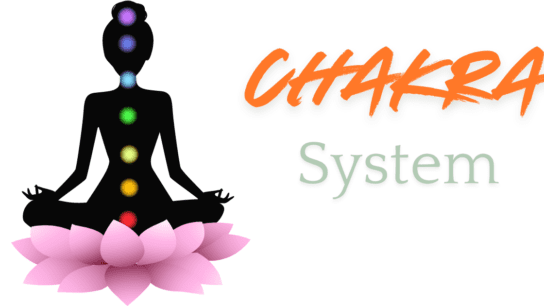Introduction
Transmission meditation stands out as a profound spiritual practice within the broader spectrum of advanced meditation techniques. It focuses on channeling and directing high spiritual energies through collective meditation, aiming for global healing and individual spiritual development. This article provides an in-depth exploration of transmission meditation, including its origins, principles, methods, benefits, and practical guidance. We will also explore how Advanced meditation alters consciousness and integrates with various forms of meditation practices.

Understanding Transmission Meditation
What is Transmission Meditation?
Transmission meditation is a spiritual practice designed to channel high spiritual energies for the benefit of both individuals and the world. It involves meditating in a group setting with the intention of directing transformative energies into the world. Unlike traditional meditation methods that focus on personal enlightenment or inner peace, transmission meditation emphasizes collective efforts to promote global healing and spiritual upliftment.
This practice connects participants with higher spiritual beings or Masters who guide and support the meditation process. The energies channeled during transmission meditation are believed to have profound effects on both personal and global levels, contributing to a greater sense of harmony and spiritual awareness.
Historical Background
The roots of transmission meditation can be traced back to the Theosophical Society, a spiritual organization founded in the late 19th century. Theosophy, which draws from various spiritual traditions, introduced the concept of a spiritual hierarchy consisting of advanced beings who guide human evolution. Transmission meditation was developed to allow individuals to tap into these higher energies and participate in global healing efforts.
As part of the broader category of advanced meditation practices, transmission meditation explores how meditation can alter consciousness and enhance our basic sense of self. It builds upon traditional meditation techniques, integrating the concept of energy transmission to achieve greater spiritual and global impact.
How Transmission Meditation Works

The Practice of Transmission Meditation
1. Group Meditation Setting: Transmission meditation is typically conducted in a group setting, which amplifies the effectiveness of the practice. The collective focus and intention of the participants help to channel spiritual energies more powerfully. The group setting also fosters a sense of community and shared purpose, enhancing the overall experience.
2. Focus on Spiritual Energies: Participants focus on connecting with higher spiritual energies or guides during the meditation. This may involve visualizations, mantras, or specific instructions provided by experienced facilitators. The intention is to direct these energies outward for the benefit of the world.
3. Transmission of Energies: The core aim of transmission meditation is to transmit the channeled energies into the world. This process is thought to support global healing, promote peace, and enhance spiritual growth. The practice is often referred to as energy transmission meditation, highlighting the focus on channeling transformative energies.
Techniques and Tools
Several techniques and tools can enhance the practice of transmission meditation:
- Visualization: Practitioners use visualization techniques to imagine light or energy flowing through them and extending into the world. This mental imagery helps to focus and direct the spiritual energies. Techniques such as heartfulness meditation transmission can be employed to deepen this visualization process.
- Mantras: Repeating specific mantras or phrases can help align the mind and intentions with the energies being channeled. These mantras may be chosen for their spiritual significance or their ability to enhance concentration.
- Guided Instructions: Experienced facilitators provide guidance to help participants maintain focus and effectively channel the energies. This includes instructions on how to do transmission meditation and integrating practices such as meditation with transmission.
Different Forms of Transmission Meditation
Transmission meditation encompasses various forms, each with its focus and techniques:
- Energy Transmission Meditation: Focuses on channeling spiritual energies for healing and transformation. This form of meditation aims to send positive energies into the world to address various global issues.
- Heartfulness Meditation Transmission: Emphasizes connecting with the heart center to foster emotional and spiritual growth. This practice integrates the principles of heartfulness with energy transmission techniques.
- Prosperity Energetic Transmission Meditation: Aims to channel energies related to prosperity and abundance. This form of transmission meditation supports individuals and communities in achieving financial and personal success.
- Three Speed Transmission Meditation: Refers to different levels of energy transmission based on the speed and intensity of the practice. This method allows practitioners to adjust the meditation process according to their needs.
- Transmission Love Meditation: Focuses on channeling energies related to love and compassion. This practice helps to cultivate a deeper sense of love and connection in both personal and global contexts.
- Yogic Transmission Meditation: Integrates yogic principles with transmission techniques. This form of meditation combines the benefits of yoga with the practice of channeling spiritual energies.
Benefits of Transmission Meditation
Personal Benefits
Transmission meditation offers numerous personal benefits, including:
- Enhanced Spiritual Connection: Practitioners often experience a deeper sense of connection with higher spiritual realms and guides. This enhanced connection contributes to a greater understanding of one’s spiritual path and purpose.
- Increased Inner Peace: The practice promotes a sense of inner tranquility and alignment with a higher purpose. Many participants find that it helps reduce stress and bring about a balanced state of mind.
- Strengthened Group Cohesion: Meditating in a group fosters a sense of community and shared purpose. This collective focus enhances the overall experience and supports the personal growth of each participant.
Global Impact
Transmission meditation also has a positive impact on a global scale:
- Promoting World Peace: By channeling positive energies into the world, transmission meditation supports efforts to promote peace and understanding. The collective intention of the group contributes to reducing conflict and fostering harmony.
- Supporting Global Healing: The energies channeled through transmission meditation are believed to aid in addressing environmental and social issues. The practice supports global healing by directing transformative energies to areas in need.
- Encouraging Spiritual Growth: The practice helps elevate global spiritual consciousness. By participating in this collective effort, individuals contribute to the spiritual evolution of humanity.
How to Get Started with Transmission Meditation
Finding a Transmission Meditation Group
To begin practicing transmission meditation, it is beneficial to join a group that conducts regular meditation sessions. Many organizations and spiritual communities offer opportunities for group meditation. Look for groups that provide transmission meditation reviews or have established practices to find a suitable group.
Recommended Resources
Several resources can help you explore transmission meditation further:
- Books: Books on transmission meditation provide valuable insights and guidance. Titles like “The Masters and the Path” by Charles Leadbeater offer an in-depth exploration of the spiritual principles underlying the practice.
- Online Courses: Online platforms offer courses and workshops on transmission meditation. These resources provide guided instruction and a virtual community for practice and support.
Tips for Practicing Transmission Meditation
To maximize the benefits of transmission meditation, consider the following tips:
- Consistency: Regular practice is key to experiencing the full benefits of transmission meditation. Aim to participate in sessions consistently, whether daily or weekly.
- Openness: Approach the practice with an open mind and a willingness to connect with higher energies. This openness enhances the effectiveness of the meditation and fosters a deeper spiritual connection.
- Patience: The benefits of transmission meditation may take time to manifest. Be patient and persistent in your practice, trusting that the process contributes to both personal and global well-being.
Common Questions about Transmission Meditation
1. What is the difference between transmission meditation and other forms of meditation?
Transmission meditation focuses on channeling and directing energies for global healing and spiritual upliftment. In contrast, other forms of meditation may concentrate on personal enlightenment, relaxation, or mindfulness.
2. How does advanced meditation alter consciousness?
Advanced meditation techniques, including transmission meditation, alter consciousness by expanding awareness and connecting with higher spiritual realms. This process deepens one’s understanding of self and enhances spiritual growth.
3. Can transmission meditation be practiced alone?
While transmission meditation is most effective in a group setting, it can also be practiced individually. Techniques such as guided visualizations and focused intentions can be used to channel spiritual energies alone.
4. How do I know if transmission meditation is right for me?
Transmission meditation may be suitable if you are interested in contributing to global healing and connecting with higher spiritual energies. Exploring the practice through group sessions or guided resources can help determine if it aligns with your spiritual goals.
Conclusion
Transmission meditation is a powerful and transformative practice that integrates personal growth with global healing. By channeling higher spiritual energies through collective meditation, practitioners can enhance their spiritual connection, promote inner peace, and contribute to the well-being of the planet. Whether you are new to meditation or an experienced practitioner, embracing transmission meditation offers a meaningful way to deepen your spiritual journey and foster a sense of unity and purpose.
Explore transmission meditation, join a group, and experience the profound effects it can have on your life and the world around you.
FAQs on Transmission Meditation?
1. Who is an advanced meditator?
An advanced meditator is someone who has progressed significantly in their meditation practice. This individual typically has a deep understanding of various meditation techniques and experiences a heightened level of awareness and spiritual insight. Advanced meditators often have a consistent practice, a refined ability to concentrate, and an advanced grasp of meditation concepts such as energy transmission and altered states of consciousness. They might also engage in complex practices like transmission meditation and integrate these techniques into their daily lives.
2. What is transmission in meditation?
Transmission in meditation refers to the process of channeling or directing spiritual energies from a higher source to the practitioner or into the world. In transmission meditation, practitioners focus on connecting with higher spiritual beings or energies and transmitting these energies for the purpose of global healing and spiritual upliftment. This practice involves collective meditation where participants work together to direct transformative energies to support both personal and planetary well-being.
3. How does movement meditation work?
Movement meditation combines physical movement with meditative practice to achieve a state of mindfulness and inner peace. It involves incorporating conscious movement, such as walking, dancing, or gentle stretching, with focused attention and breath control. The purpose is to harmonize the body and mind, allowing practitioners to experience a meditative state through physical activity. Movement meditation helps to enhance awareness, release tension, and foster a deep sense of relaxation and connection to the present moment.
4. What is the difference between meditation and Transcendental Meditation?
Meditation is a broad practice that encompasses various techniques aimed at achieving mental clarity, relaxation, and spiritual growth. It can include practices such as mindfulness, concentration, and visualization. Transcendental Meditation (TM), on the other hand, is a specific form of meditation developed by Maharishi Mahesh Yogi. TM involves the silent repetition of a mantra to reach a state of restful awareness and transcendental consciousness. While meditation in general may involve various techniques, TM has a unique approach and specific method for achieving its goals.
5. How to do TM meditation?
To practice Transcendental Meditation (TM), follow these steps:
- Find a Quiet Place: Choose a quiet and comfortable place where you will not be disturbed.
- Sit Comfortably: Sit in a comfortable position with your back supported and your eyes closed.
- Repeat the Mantra: Silently repeat your assigned mantra. TM mantras are specific sounds or words given by a trained TM teacher. The mantra helps to settle the mind and achieve a state of restful awareness.
- Let Thoughts Flow: If thoughts arise, gently return to repeating the mantra without engaging with the thoughts.
- Practice Regularly: TM is typically practiced twice a day for 20 minutes each session. Consistent practice helps to deepen the meditation experience.
6. What is transmittal meditation?
Transmittal meditation, often confused with transmission meditation, involves the act of transmitting or channeling spiritual energies from one person or group to another. This practice is focused on sending positive or healing energies to others, either directly or through collective meditation. It can be a part of various meditation traditions and is aimed at facilitating spiritual growth and global well-being.
7. What are spiritual transmissions?
Spiritual transmissions refer to the process of receiving or channeling spiritual energies or guidance from higher spiritual sources or beings. These transmissions can occur through various practices, including meditation, prayer, or energy work. Spiritual transmissions are believed to provide insight, healing, and support for personal and spiritual development, often enhancing one’s connection with higher realms or spiritual guides.
8. What is the golden rule of meditation?
The golden rule of meditation is to approach the practice with a sense of openness and non-judgment. This means allowing yourself to experience the meditation process without expectation or self-criticism. Embrace whatever arises during meditation—whether thoughts, feelings, or sensations—with a gentle and accepting attitude. This approach fosters a deeper connection with the present moment and enhances the overall effectiveness of the meditation practice.
9. What are the 3 R’s of meditation?
The 3 R’s of meditation refer to:
- Relaxation: Achieving a state of physical and mental relaxation is essential for effective meditation. This involves calming the body and mind to create a conducive environment for meditation.
- Repetition: Regularly practicing meditation is crucial for developing and maintaining a meditation habit. Consistency helps deepen the meditation experience and fosters long-term benefits.
- Receptivity: Being open and receptive during meditation allows for a more profound connection with the practice. This involves letting go of resistance and being fully present to the experience.
10. Can I do TM 3 times a day?
Transcendental Meditation (TM) is traditionally practiced twice a day for 20 minutes each session. While the standard recommendation is two sessions daily, some practitioners may choose to meditate more frequently based on personal preference or specific needs. If you are considering practicing TM three times a day, it is advisable to consult with a certified TM teacher or practitioner to ensure that it aligns with your meditation practice and overall well-being.





[…] maintain balanced energy, consider regular practices such as yoga, transmission meditation, and energy healing. Pay attention to any imbalances or blockages and address them with appropriate […]